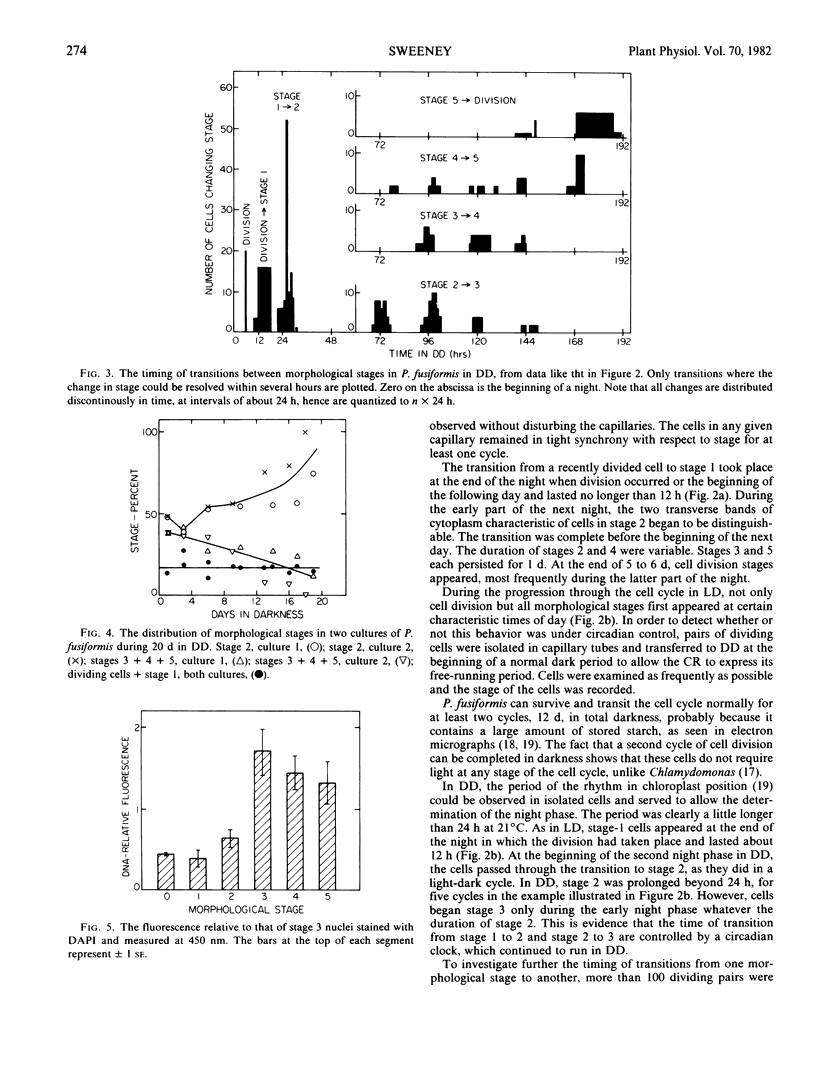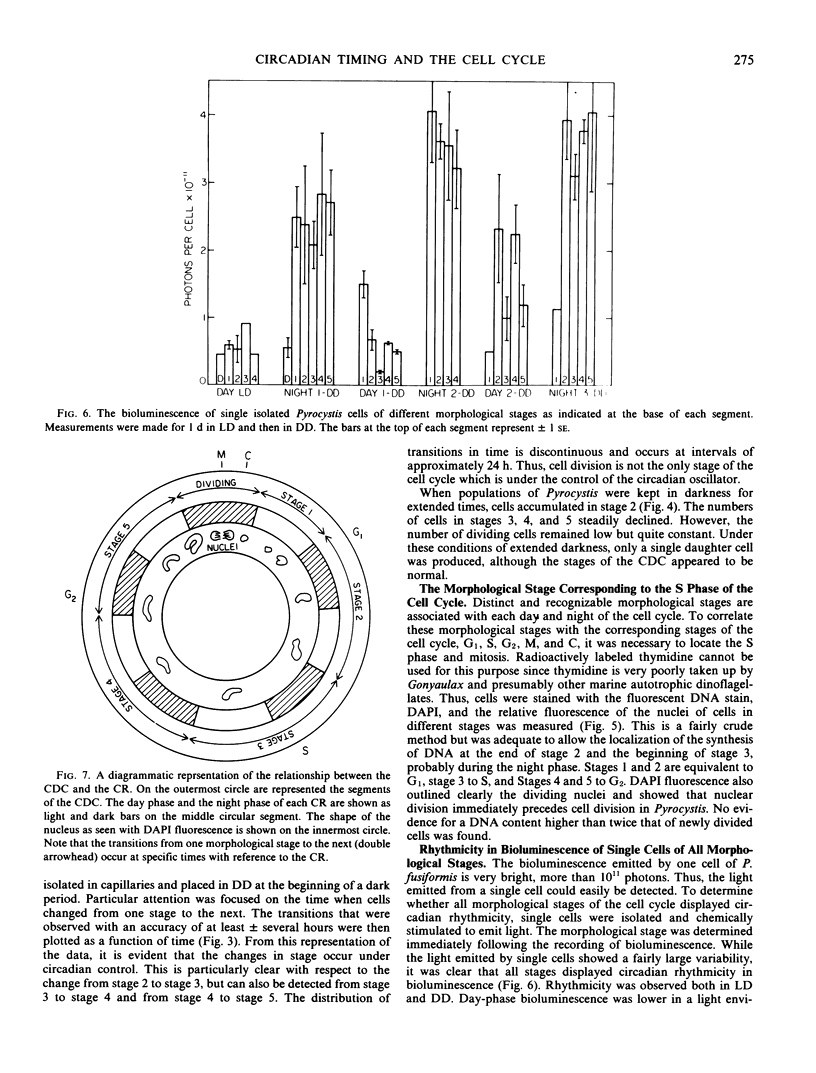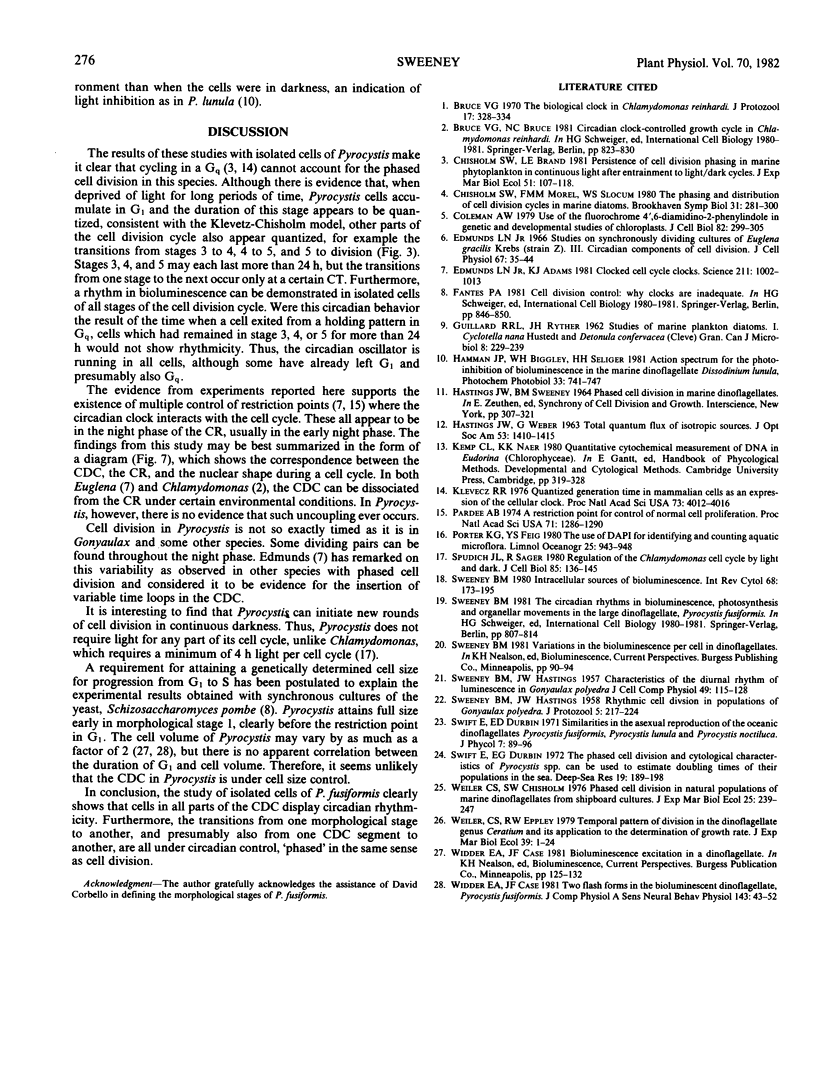Abstract
Dividing pairs or single cells of the large dinoflagellate, Pyrocystis fusiformis Murray, were isolated in capillary tubes and their morphology was observed over a number of days, either in a light-dark cycle or in constant darkness. Morphological stages were correlated with the first growth stage, G1, DNA synthesis, S, the second growth stage, G2, mitosis, M, and cytokinesis, C, segments of the cell division cycle. The S phase was identified by measuring the nuclear DNA content of cells of different morphologies by the fluorescence of 4′, 6-diamidino-2-phenylindole dichloride.
Cells changed from one morphological stage to the next only during the night phase of the circadian cycle, both under light-dark conditions and in continuous darkness. Cells in all segments of the cell division cycle displayed a circadian rhythm in bioluminescence. These findings are incompatible with a mechanism for circadian oscillations that invokes cycling in Gq, an hypothesized side loop from G1. All morphological stages, not only division, appear to be phased by the circadian clock.
Full text
PDF




Selected References
These references are in PubMed. This may not be the complete list of references from this article.
- Coleman A. W. Use of the fluorochrome 4'6-diamidino-2-phenylindole in genetic and developmental studies of chloroplast DNA. J Cell Biol. 1979 Jul;82(1):299–305. doi: 10.1083/jcb.82.1.299. [DOI] [PMC free article] [PubMed] [Google Scholar]
- Edmunds L. N., Jr, Adams K. J. Clocked cell cycle clocks. Science. 1981 Mar 6;211(4486):1002–1013. doi: 10.1126/science.7008196. [DOI] [PubMed] [Google Scholar]
- Edmunds L. N., Jr Studies on synchronously dividing cultures of Euglena gracilis Klebs (strain Z). 3. Circadian components of cell division. J Cell Physiol. 1966 Feb;67(1):35–43. doi: 10.1002/jcp.1040670105. [DOI] [PubMed] [Google Scholar]
- GUILLARD R. R., RYTHER J. H. Studies of marine planktonic diatoms. I. Cyclotella nana Hustedt, and Detonula confervacea (cleve) Gran. Can J Microbiol. 1962 Apr;8:229–239. doi: 10.1139/m62-029. [DOI] [PubMed] [Google Scholar]
- Klevecz R. R. Quantized generation time in mammalian cells as an expression of the cellular clock. Proc Natl Acad Sci U S A. 1976 Nov;73(11):4012–4016. doi: 10.1073/pnas.73.11.4012. [DOI] [PMC free article] [PubMed] [Google Scholar]
- Pardee A. B. A restriction point for control of normal animal cell proliferation. Proc Natl Acad Sci U S A. 1974 Apr;71(4):1286–1290. doi: 10.1073/pnas.71.4.1286. [DOI] [PMC free article] [PubMed] [Google Scholar]
- Spudich J. L., Sager R. Regulation of the Chlamydomonas cell cycle by light and dark. J Cell Biol. 1980 Apr;85(1):136–145. doi: 10.1083/jcb.85.1.136. [DOI] [PMC free article] [PubMed] [Google Scholar]


